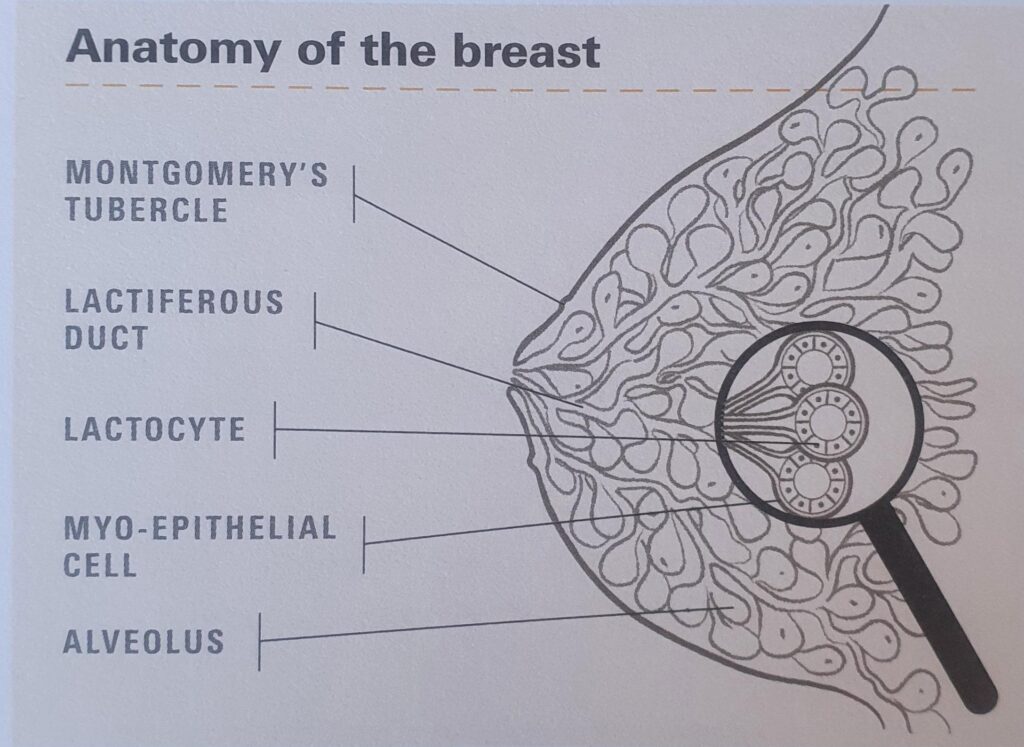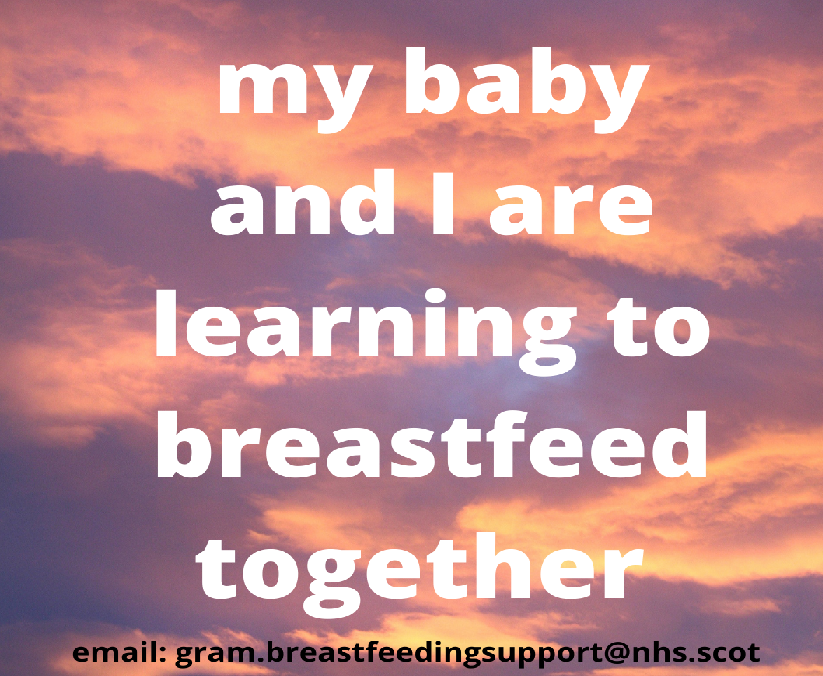Contents
How hormones and anatomy work together
We think it’s really helpful to explain a bit more about how your hormones and anatomy work together. The video at the top of the page illustrates how the hormones work to produce your amazing breastmilk.
As soon as your baby suckles, nerve impulses are sent to your brain and your pituitary gland is activated. The pituitary gland is where prolactin and oxytocin are made and released into your bloodstream. When it reaches the lactocytes in your breasts, the prolactin causes these cells to start assembling all the amazing components needed to make breastmilk.
Oxytocin stimulates the tiny myo-epithelial cells in the alveoli to contract and squeeze the milk into the lactiferous ducts. The milk moves along the ducts towards the nipple, where it collects in slightly bulging areas just underneath the areola.
When your baby suckles effectively, their tongue presses these bulging areas, which squirt the milk into their mouth
Breast Anatomy
Breast anatomy – again, don’t worry about learning this, no-one will test you! but it can be helpful to get to know what is normal for your breasts before your baby arrives and it can help you when you are having conversations with your midwife after baby has arrived.
Areola – this circle of darker skin around your nipple isn’t shown in the diagram as sizes vary between women and it isn’t related to the structures underneath
Montgomery’s tubercle – the little nobbly bumps around your areola, they lubricate the nipple with an oily fluid which keeps the skin soft and healthy. The fluid smells like amniotic fluid which is a very familiar smell to your baby when they arrive
Lactiferous ducts – these bulging tubes lead to the nipple surface, the pipework through which milk travels
Lactocyte – these are the cells that make and store the milk
Myo-epithelial cell – these act as muscles which contract when oxytocin is released to deliver milk to your baby
Alveolus – these look like clusters of tiny grapes and are little sacs of the milk-producing lactocyte cells.

Prolactin and Oxytocin


Prolactin and oxytocin work as a team to regulate breastfeeding. Both hormones are produced in your brain and do different jobs. Imagine you are a delivery business – you need customers (order) and a delivery person (supply) to be successful.
Prolactin sends signals to let your body know to start making breastmilk and production of prolactin starts as soon as your placenta is delivered after birth. The more suckling from your baby, the more prolactin is made – baby is ordering their milk!
Then oxytocin comes on the scene and ‘delivers’ the milk from your breasts to baby – commonly known as the ‘let-down reflex’. It also triggers feelings of love and mothering behaviour – a powerful mood enhancer giving you that fantastic feel good factor.
Oxytocin also causes uterine contractions which helps your uterus return to its pre-pregnancy size.
Both prolactin and oxytocin work together to keep up build your milk supply and enhance the amazing bond between mum and baby.
An important point to realise here is that babies are very good at this breastfeeding/survival business, boosting your supply if needed by lots of suckling, as well as making sure you fall completely head over heels in love with them by making oxytocin flood your body!
Feedback Inhibitor of Lactation
Feedback Inhibitor of Lactation (FIL) which will reduce the amount of milk you produce. Understanding FIL means we can understand why breastfed babies need to feed often and why this frequent feeding absolutely isn’t a sign that you don’t have enough milk for them. It is one of the most common misconceptions, so let’s bust the myth. You can find out more information of cluster feeding by clicking here.
Milk needs to be removed frequently if production is to continue. An effectively-attached, enthusiastic baby is the best way to do this.
If baby has not yet learnt to feed effectively or perhaps you had IV fluids during your labour, your breasts may become engorged. FIL is working inside these breasts to reduce milk production. Unfortunately, engorgement makes attachment difficult, so making the baby’s job harder.
Engorgement is prevented by early, frequent, effective feeding. If it occurs prompt action is needed to remove milk and enable continued production.
As lactation progresses, milk removal and subsequent reduction of FIL, becomes vital to ensure ongoing milk production.
Another way of thinking about it is that FIL is designed to help your body stop making milk, but this mechanism is kept in check by having a baby effectively feed from you. This frequent feeding will continue through night time and is a completely normal and important part of establishing your milk supply, as your prolactin levels are highest at night. Feeding through the night ensures milk is available for baby in the daytime – plus of course babies are totally dependent on you for their safety and security, so making sure you wake up and pay them attention is important to them!
Young babies can not tell night apart from day however over time, hormones, passed to baby through your breastmilk help baby to learn this skill. It is very unusual for a young baby to sleep through the night and it isn’t a realistic expectation, regardless of how baby is fed. Frequent waking is protecting them against SIDS. For more information on infant sleep, head to
It’s a good idea to keep night time feeds nice and quiet with dim lighting and little stimulation to help baby settle back to sleep. And making sure maximise your opportunities for rest during the day is important to help you recover from birth and adjust to the arrival of your new baby.
Cortisol
Why would this be important for breastfeeding? Cortisol is a stress hormone. When you are stressed or anxious and your body releases cortisol, this inhibits the release of oxytocin which is important for delivering milk to your baby. High cortisol levels will affect your perception and tolerance of pain.
There are things that you can try which can help your body to feel safe and in control such as affirmations, breathing techniques, guided relaxation and doing things that you enjoy. We have a number of breastfeeding guided relaxations available for you which we can send via e-mail. to: gram.breastfeedingsupport@nhs.scot

